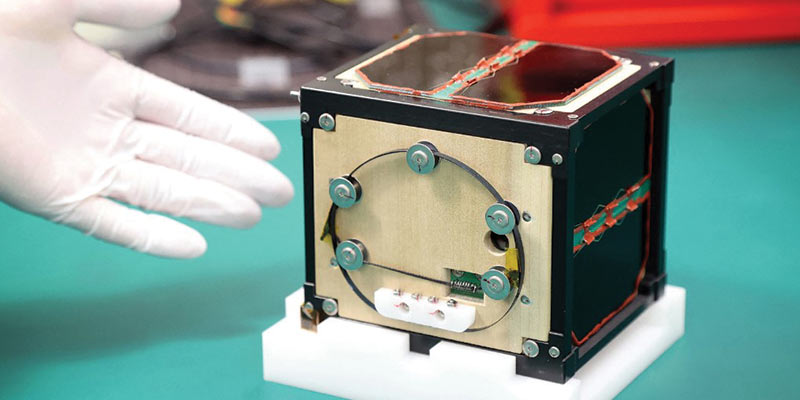- World
- Nov 06
Japan launches world’s first wooden satellite into space
• The world’s first wooden satellite, built by Japanese researchers, was launched into space on November 5 in an early test of using timber in lunar and Mars exploration.
• LignoSat, developed by Kyoto University and homebuilder Sumitomo Forestry, will be flown to the International Space Station on a SpaceX mission, and later released into orbit about 400 km above the Earth.
• ‘LignoSat’ is a combination of the words “ligno”, a prefix meaning wood, and “satellite”.
Key features of LignoSat:
• The palm-sized LignoSat is tasked to demonstrate the cosmic potential of the renewable material as humans explore living in space. Each side of the experimental satellite measures just 10 centimetres (four inches).
• With development beginning in April 2020, LignoSat is crafted from magnolia wood, selected for its strength and workability after space exposure tests were conducted on cherry, birch and magnolia wood chips.
• The researchers found that honoki, a kind of magnolia tree native in Japan and traditionally used for sword sheaths, is most suited for spacecraft, after a 10-month experiment aboard the International Space Station.
• LignoSat is made of honoki, using a traditional Japanese crafts technique without screws or glue. Once deployed, LignoSat will stay in the orbit for six months, with the electronic components onboard measuring how wood endures the extreme environment of space, where temperatures fluctuate from -100 to 100 degrees Celsius every 45 minutes as it orbits from darkness to sunlight.
• LignoSat will gauge wood’s ability to reduce the impact of space radiation on semiconductors, making it useful for applications such as data centre construction.
Benefits of wooden satellite:
• Wood is more durable in space than on Earth because there is no water or oxygen that would rot or inflame it.
• The researchers expect the wooden material will burn up completely when the device re-enters the atmosphere, potentially providing a way to avoid the generation of metal particles when a retired satellite returns to Earth.
• Conventional metal satellites create aluminium oxide particles during re-entry, but wooden ones would just burn up with less pollution.
• The initiative aims to reduce space debris.
• The researchers aim to combat space clutter and promote more environment-friendly space activity.
• Conventional satellites pose air pollution risks due to metal particles generated during re-entry.
Manorama Yearbook app is now available on Google Play Store and iOS App Store

